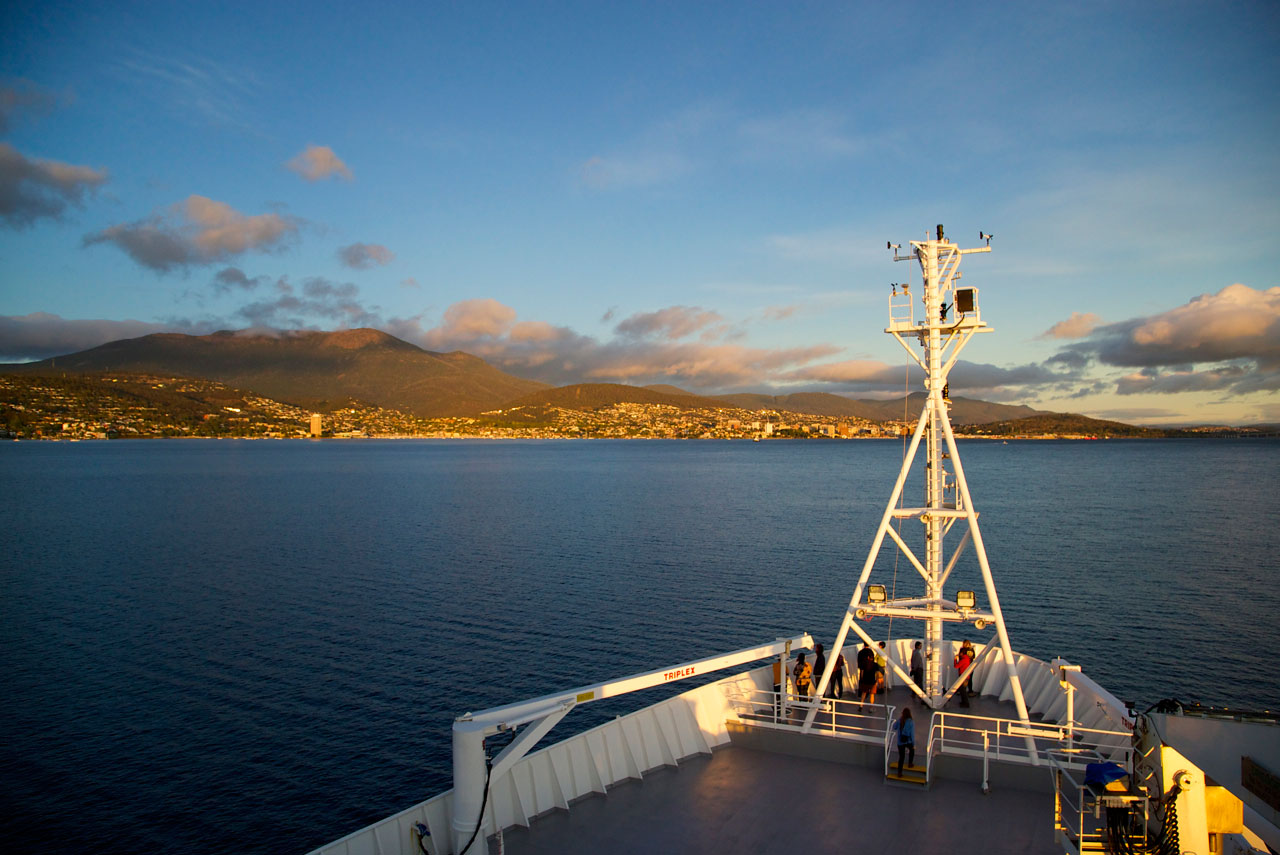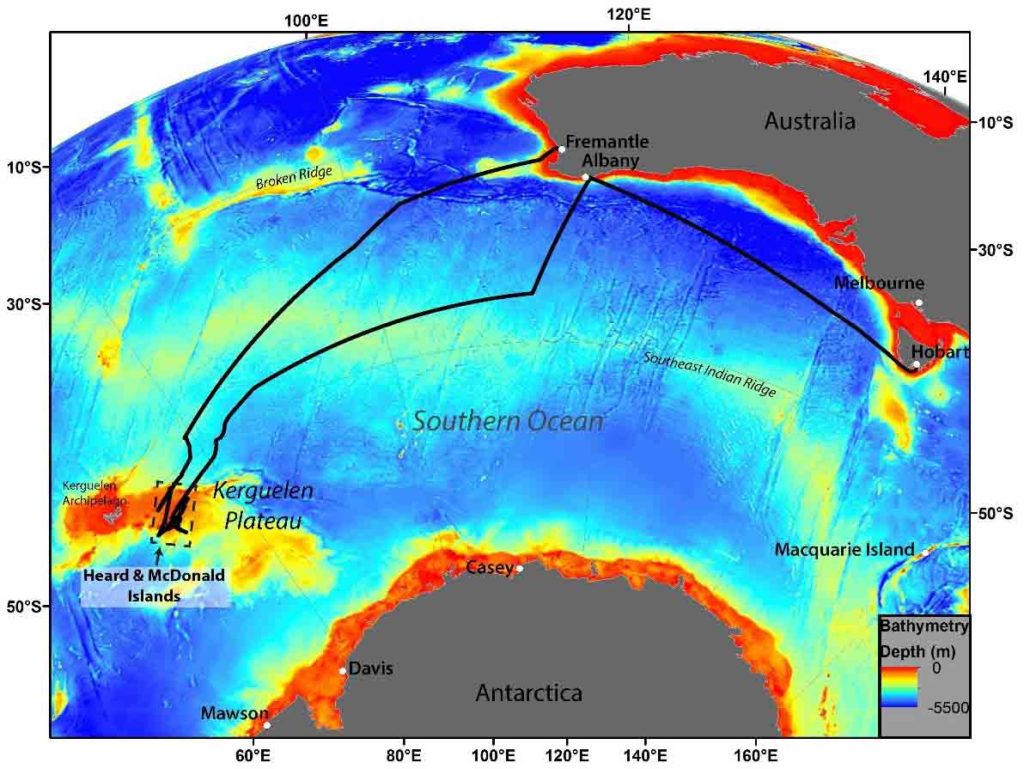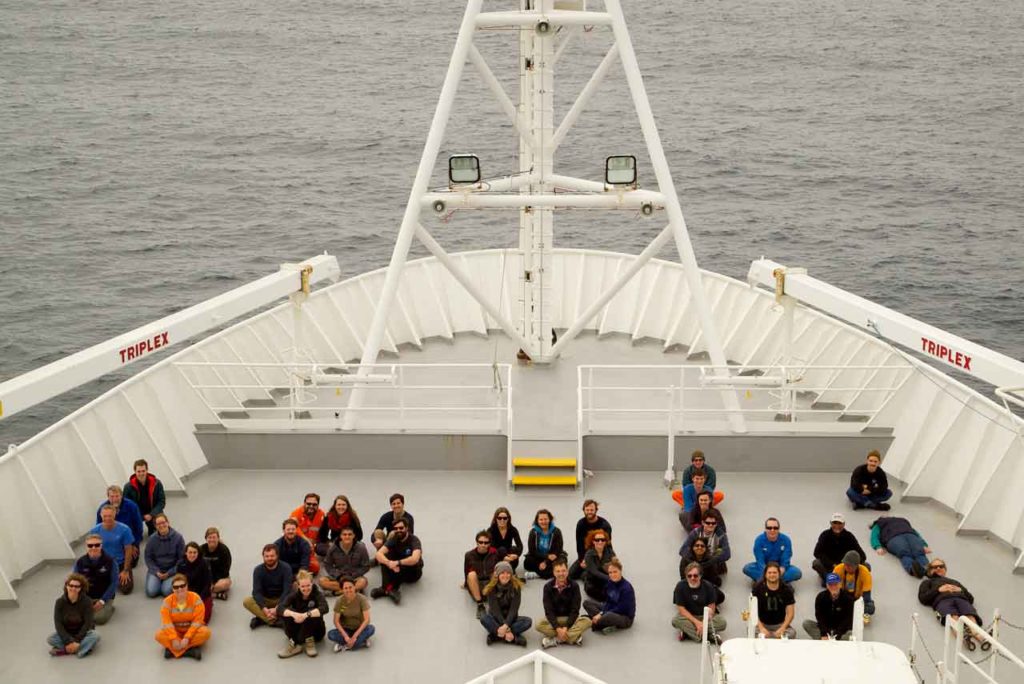After travelling almost 16,000 km's , witnessing Australia's only volcano erupt and collecting detailed data every where from acoustic plumes to sea knolls, the RV Investigator and its crew heads home to Hobart for a well deserved rest
The passage of time seemed to accelerate as we traversed the Great Australian Bight and approached Tasmania. The science + arts party was busy wrapping up shipboard analyses, packing samples, finalising shipboard data and metadata compilations, synthesising initial results, and packaging equipment for off-loading. We sailed up the Derwent on a glorious summer day, Saturday 27th February, and our 51-day voyage came to a sudden end. Welcoming family and friends on the CSIRO wharf made for numerous poignant reunions for the many Hobartians among the ship’s complement; such gratification was delayed for the interstate and international contingent. Demobilisation was mostly completed the day of our arrival.

The RV Investigator approaching the CSIRO dock at Hobart.
The final approach to Hobart at the end of the RV Investigator’s first 2016 voyage, on 27th February. Image credit: Pete Harmsen.
By the numbers, IN2016-V01 – Heard Earth-Ocean-Biosphere Interactions –on the Kerguelen Plateau tested some of RV Investigator’s limits. Despite spending a week less at sea than originally planned due to a medical evacuation, our 51 days constitute the longest Marine National Facility voyage to date. We travelled about 16,000 km, conducted 51 stations (including 41 trace metal rosette and 11 in situ pump deployments), identified 100+ acoustic plumes emanating from the seafloor, videoed more than 30 locations where bubbles emanated from the seafloor, undertook two cross-plateau water column transects, successfully retrieved eight dredges from seaknolls and a debris avalanche, mapped approximately 7,000 km2 of Kerguelen Plateau seafloor, and witnessed an eruption of Big Ben on Heard Island. All in all, in some of the most remote and tempestuous reaches of the global ocean, RV Investigator proved to be the highly capable, state-of-the-art, multi-purpose, dedicated research platform that Australia has needed for many decades. The ship enables researchers to address Australia’s most pressing marine scientific challenges.

Colourful graphic illustrating a ship's course
The final track map for the Investigator’s first 2016 voyage.
Planning, executing, and supporting IN2016_V01 involved not only the 60 voyage participants, but also many, many people ashore: MNF, ASP, and Aspen Medical staff; Australian Research Council, Australian Antarctic Division, Australia Council for the Arts, and international funding body employees; university and agency support personnel; and the family and friends of the shipboard complement. We are extremely grateful to everyone for their incredible contributions to the success of the voyage! And we all look forward to future voyages aboard RV Investigator.

Shipboard science+arts party of 40 configured to spell ‘heobi,’ choreographed by James Batchelor. Credit: Tom Watson.


10th March 2016 at 12:06 pm
When will you be in Sydney again?
10th March 2016 at 1:25 pm
Hi Alan,
The current 2016-17 schedule has the Investigator docking in Sydney on the 19th October 2016 for a short period.
Regards,
Ellen
CSIRO Social Media